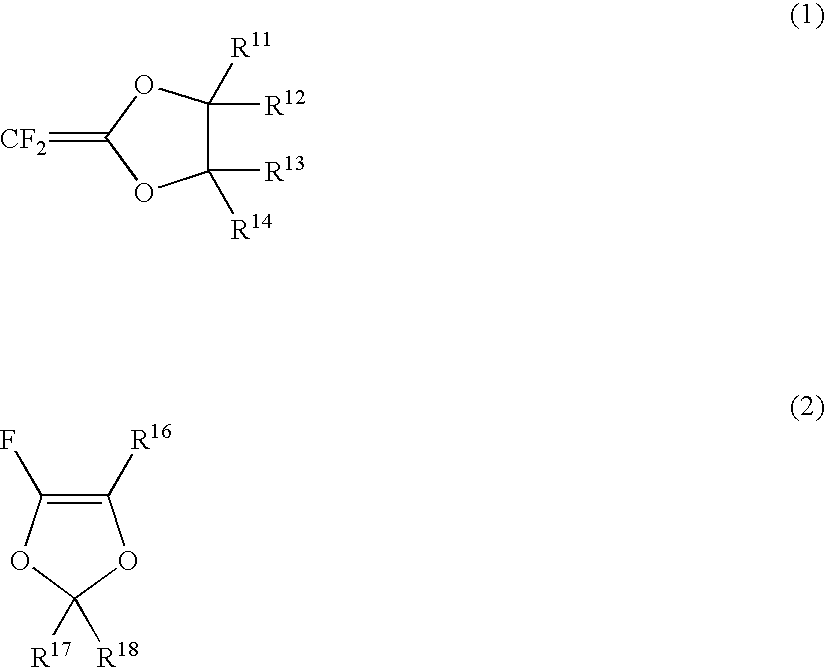Fine composite particles and their production method
- Summary
- Abstract
- Description
- Claims
- Application Information
AI Technical Summary
Benefits of technology
Problems solved by technology
Method used
Image
Examples
example 1
[0097] To a mixed liquid comprising 3.0 g of an organosilica sol (SiO2 content 20%, ethanol solution, manufactured by Catalysts & Chemicals Industries Co., Ltd.) having a spherical silica with an average particle size of 20 nm dispersed therein and 0.04 g of 2% hydrochloric acid, 0.233 g of fluoroalkyl silane A was added with stirring. After dropwise addition, the temperature was increased to 60° C., followed by stirring for 3 hours to prepare a silica sol containing fine surface modified silica particles.
[0098] Then, the entire amount of the above obtained silica sol was dropwise added to an aqueous solution having 0.75 g of a fluorine type surfactant A dissolved in 150 g of deionized water with stirring. Ethanol was distilled off under reduced pressure by using an evaporator, and then a mixed liquid comprising 0.74 g of PBVE, 0.037 g of HMDVE and 0.007 g of IPP as a polymerization initiator was added, followed by irradiation with ultrasonic waves for 5 minutes with stirring for s...
example 2
[0100] Polymerization of PBVE / HMDVE was carried out using the same materials in the same method under the same conditions as in Example 1. Polymerization was carried out at 40° C. for 20 hours, followed by cooling to room temperature, and then a mixed liquid comprising 7.6 g of PBVE and 0.04 g of IPP was added to the reactor, followed by irradiation with ultrasonic waves with stirring to obtain a uniform solution. Then, the temperature was increased to 40° C. again, and reaction was carried out for 20 hours with stirring. Then, by means of agglomeration and drying steps, 5.5 g of a white powder was obtained.
[0101] The obtained fine composite particles are considered to be such fine particles that the surface of fine silica particles with a diameter of 20 nm is covered with two fluororesin layers, the inner layer is made of a polymer of PBVE crosslinked with HMDVE, and the outer layer is made of a homopolymer of PBVE. The fine composite particles had a silica content of 8% and were ...
example 3
[0103] Polymerization of PBVE was carried out using the same materials as in Example 1 except that HMDVE was not used and 8.30 g of BVE and 0.042 g of IPP were used, in the same method under the same conditions, to obtain 6.23 g of a white powder. The obtained fine composite particles had a silica content of 7%.
[0104] Using the obtained powder, press molding was carried out at 270° C. to prepare a film, and the dielectric constant / dielectric loss tangent was measured and found to be 2.27 / 0.002 at 10 MHz and 2.25 / 0.005 at 1 GHz, and the film was confirmed to have low dielectric characteristics. The tensile strength and elongation were measured and as a result, the elastic modulus was 1,730 MPa, and the film broke at an extension of 1.7%.
PUM
| Property | Measurement | Unit |
|---|---|---|
| Percent by mass | aaaaa | aaaaa |
| Percent by mass | aaaaa | aaaaa |
| Size | aaaaa | aaaaa |
Abstract
Description
Claims
Application Information
 Login to View More
Login to View More - R&D
- Intellectual Property
- Life Sciences
- Materials
- Tech Scout
- Unparalleled Data Quality
- Higher Quality Content
- 60% Fewer Hallucinations
Browse by: Latest US Patents, China's latest patents, Technical Efficacy Thesaurus, Application Domain, Technology Topic, Popular Technical Reports.
© 2025 PatSnap. All rights reserved.Legal|Privacy policy|Modern Slavery Act Transparency Statement|Sitemap|About US| Contact US: help@patsnap.com

